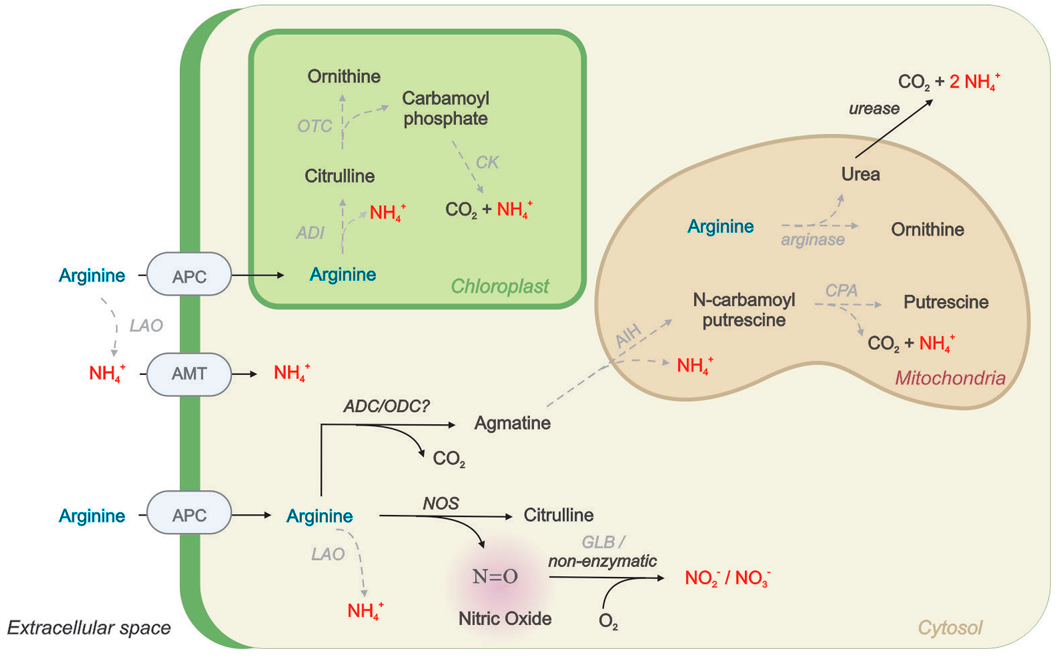Frontiers in Marine Science, 19 December 2022, 2022
Introduction: Photosynthetic organisms respond to nitrogen (N) deprivation with the slowdown of photosynthesis and electron transport resulting in the balance the carbon (C)/N ratio. Under this extreme condition, organisms trigger complex mechanisms to keep growing using different N sources and recycling N containing molecules. In particular, phytoplankton are able to uptake L-arginine (L-Arg) as an organic N source. L-Arg can be assimilated mainly by the arginase, arginine deimidase, arginine decarboxylase or L-amino oxidase pathways.
Results: We analyzed the effect of different N sources on the growth of the green algae Ostreococcus tauri. N starvation caused an inhibition of culture growth and a decrease in chlorophyll content. The addition of L-Arg to an N-deprived medium promotes a sustained growth rate of O. tauri culture and the increase of chlorophyll levels. The transcript level of genes involved in N uptake and metabolism were increased in N-starved condition while the addition of L-Arg as the sole N source reduced their induction. Since the O. tauri genome lacks the classical pathways to metabolize L-Arg, another enzyme/s may be responsible for L-Arg catabolism. Previously, we characterized the nitric oxide synthase (NOS) enzyme from O. tauri (OtNOS) which oxidizes L-Arg producing nitric oxide (NO) and citrulline. The NOS inhibitor L-NAME blocks the effect promoted by L-Arg on N-deprived O. tauri growth. Besides, NO level increased in O. tauri cells growing in L-Arg containing medium, suggesting the participation of OtNOS enzyme in L-Arg metabolism during N starvation.
Discussion: Our hypothesis suggests that, after NOS-dependent Arg degradation, non-enzymatic oxidation of NO produces N oxides (mainly NO2–) that are re-incorporated to the N primary metabolism. As expected, N deprivation increases the lipid content in Ostreococcus. The addition of L-Arg or NO2– as the sole N sources showed a similar increase in lipid content to N deprivation. In summary, our results demonstrate that L-Arg is able to function as N source in Ostreococcus. The evidences on an alternative pathway of N supply and metabolism in a photosynthetic microorganism are discussed. These results could also allow the development of biotechnological tools for increasing lipid production for industry.

